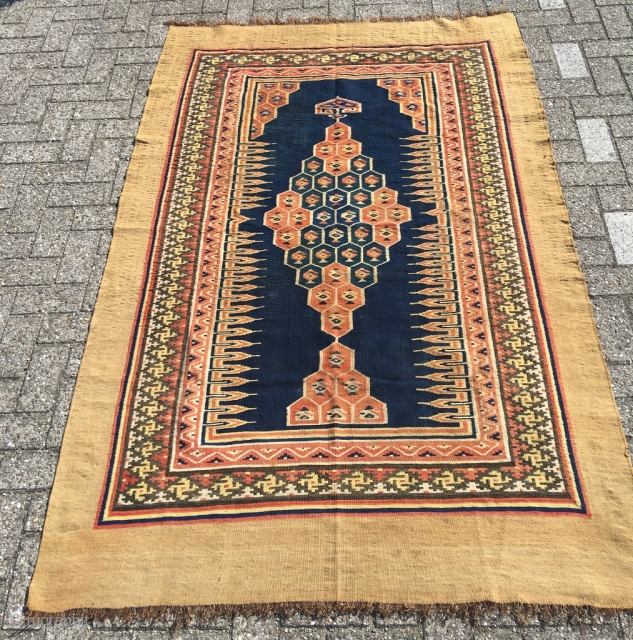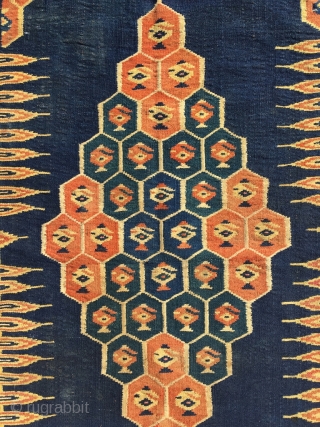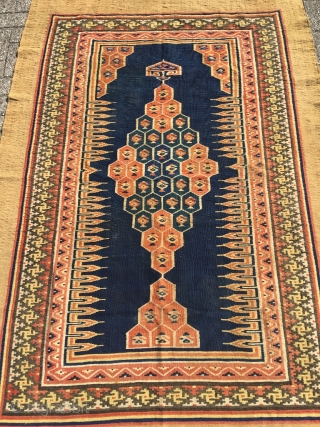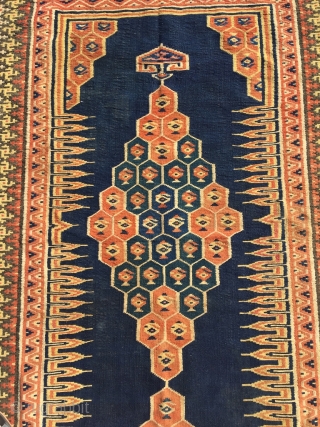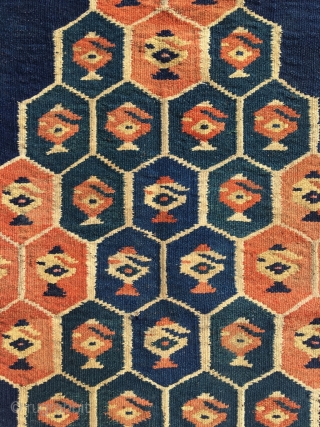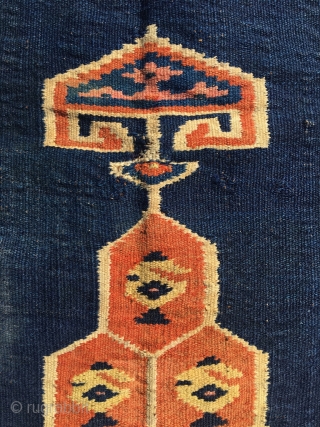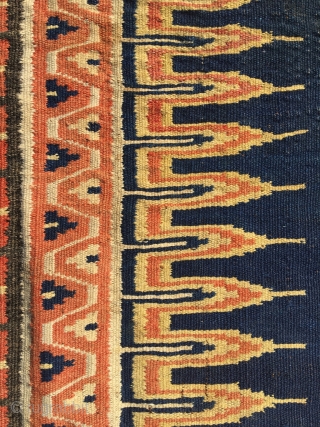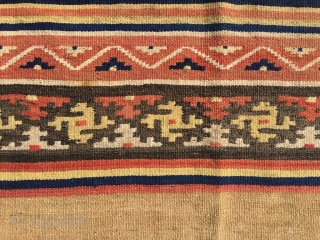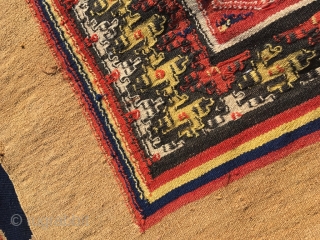Back
Bakhtiari shushtar kilim (sofreh), second half 19th century. Natural camel wool, threadlike warps. These kilims were ceremonial items; Tanavoli suggests they were used as sofrehs and they have also been known to act as tribute payment from Bakhtiari khans to the Teheran court. Unusual is that this example can only be read vertically, which contrasts the use of a sofreh, as these can be read horizontally as well as vertically due to their geometric design. This example has the 'fingers' often seen in sofreh but also has the suggestion of a mirhab. This one is also unusual in the palette of natural colors without the brighter ones often seen in late 19th century examples (compare catalogue Rippon Boswell). Possibly this indicates an earlier date. The wool is heavily patinated and has a coarse feel, leading me to surmise the same. Excellent condition, some small old repairs. Size 85.8 x 56.3 inch (218 x 143 cm). Questions welcome.
price:
Sold, thank you
- Home
- Antique Rugs by Region
- Category
- Profiles
- Post Items Free
- Albums
- Benaki Museum of Islamic Art
- Budapest: Ottoman Carpets
- Gulbenkian Museum
- Islamic Carpets. Brooklyn
- Islamic Textiles. Brooklyn
- Konya Museum: Rugs
- MKG, Hamburg
- MMA: Caucasian Carpets
- MMA: Mamluk Carpets
- MMA: Mughal Indian Carpets
- MMA: Ottoman Carpets
- MMA: Safavid Persian Carpets
- MMA: Turkmen Rugs
- McCoy Jones Kilims
- Ottoman textiles. Met
- Philadelphia Museum
- Rugs and Carpets: Berlin
- Seljuqs at the Met
- TIEM, Istanbul: Carpets
- V&A: Classical Carpets
- Vakiflar Carpets: Istanbul
- Baluch Rugs: Indianapolis
- Gallery Exhibitions
- Jaf an Exhibition
- Alberto Levi Gallery
- Andean Textile
- Christie's London: 2016
- Francesca Galloway
- HALI at 40
- ICOC Washington, DC 2018
- Jajims of the Shahsavan
- London Islamic Week April, 2018
- Mongolian Felts
- Navajo Rugs: JB Moore
- Persian Piled Weavings
- SF Tribal & Textile Art Show 2020
- SF Tribal 2019
- Sotheby's: C. Alexander
- Turkish Prayer Rugs
- Turkmen Main Carpets ICOC 2007








